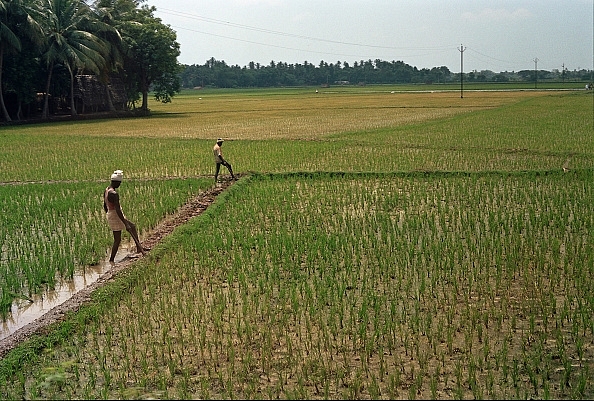Economy
Farmers Will Discover Prices And Agents Are Going to Disappear In National Agri Market
- Modi’s online platform will help farmers to build a good price for their products.

Irrigation/Getty Images
In a move to help double the incomes of farmers by 2022 – India’s 75th year of Independence – Prime Minister Narendra Modi has sought to leverage the Digital India initiative to create a unified national market for agriculture (NAM). This will be an online platform which gives farmers a national market reach to sell and bid for the crops. It is a positive step towards bringing greater economic freedom in agri sector.
Each state has multiple, government-regulated mandis (Agricultural Produce Marketing Committee or APMCs) that presently require separate licenses and market fees from farmers. These mandis are intermediaries between farmers and markets, artificially inflating the prices of crops through high commissions and fees. Originally created to prevent private buyers from exploiting the farmers, these mandis have today become strongholds of corrupt political elite who rig auctions and pocket unfair benefits. This system was originally created with good intentions, but as any good student of policy-making would know, intentions are clearly not enough in precipitating good results.
Furthermore, there are also state-level regulations that often forbid the farmers from selling their produce in other states. These restriction and lack of an effective ‘price discovery’ mechanism ( buying and selling in free market) leaves them no other option but to dump crops at low prices or distress selling.
That’s where NAM will help through the creation of a first-stage, online platform to facilitate price discovery. ‘First-stage’ because, while it will considerably reduce touch points of farmers with graft-seeking middlemen in the wholesale markets, the markets themselves will still be heavily regulated by the states, notwithstanding the fact that those states will still be required to amend their respective APMC Acts so as to qualify for participation in the new e-platform trading model. In his Union Budget speech, Finance Minister Arun Jaitley informed that only 12 states have amended their APMC Acts so far. The success of NAM as a mechanism to raise farmers’ incomes crucially depends on whether and when most states get on board to connect them online.
In the current scheme, a total of 585 APMC markets will be connected through this platform in phases – 200 markets by September 2016, another 200 by March 2017, and 185 by March 2018. A total of Rs. 200 crore has been committed to implementing this platform through the Agri-Tech Infrastructure Fund and all expenses for creating the software will be borne by the Department of Agriculture, Cooperation, and Farmers’ Welfare, which will also give a grant of maximum Rs. 30 lakh to each mandi for the related infrastructure.
This model of heavy spending on infrastructure reflects Modi’s style of state capitalism, that seeks to promote market competition through state involvement. An ideal scenario would be to throw open agricultural marketing to competition by abolishing the APMCs. However, agricultural marketing is a state subject and the Centre can do little.
Still, a unified national market will help ease the trading of commodities for farmers, promote economic freedom, bring the much-needed transparency in trading, and also garner revenues for APMC markets by virtue of the sheer rise in transactions that will now be carried out by farmers. Not to mention that it will also inevitably help raise the incomes of the farmers who will be able to command a justifiable price for their produce.
Introducing ElectionsHQ + 50 Ground Reports Project
The 2024 elections might seem easy to guess, but there are some important questions that shouldn't be missed.
Do freebies still sway voters? Do people prioritise infrastructure when voting? How will Punjab vote?
The answers to these questions provide great insights into where we, as a country, are headed in the years to come.
Swarajya is starting a project with an aim to do 50 solid ground stories and a smart commentary service on WhatsApp, a one-of-a-kind. We'd love your support during this election season.
Click below to contribute.
Latest